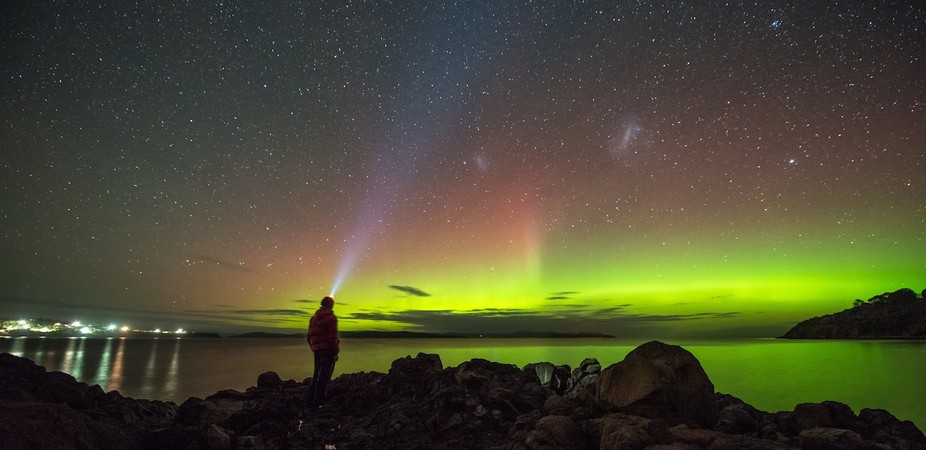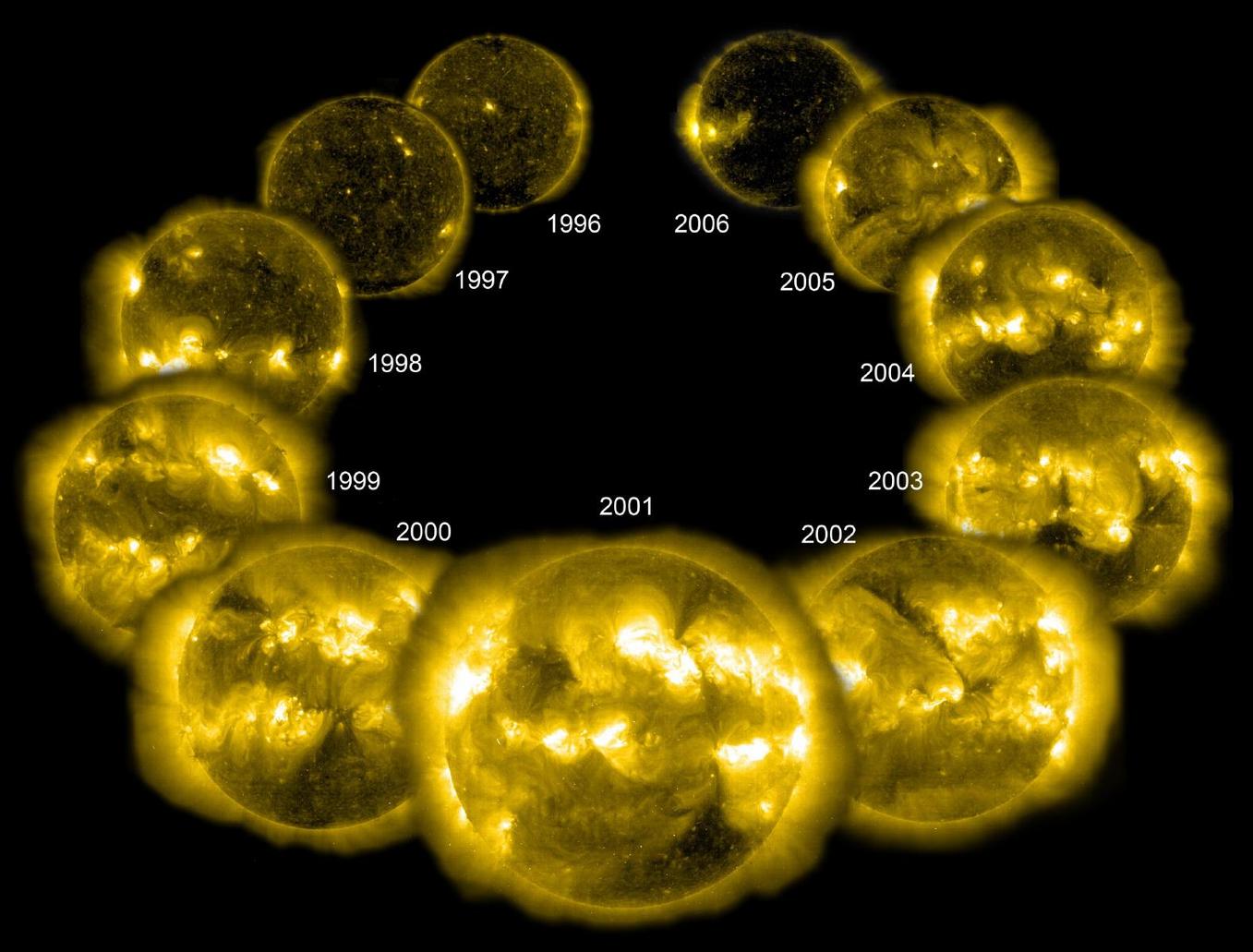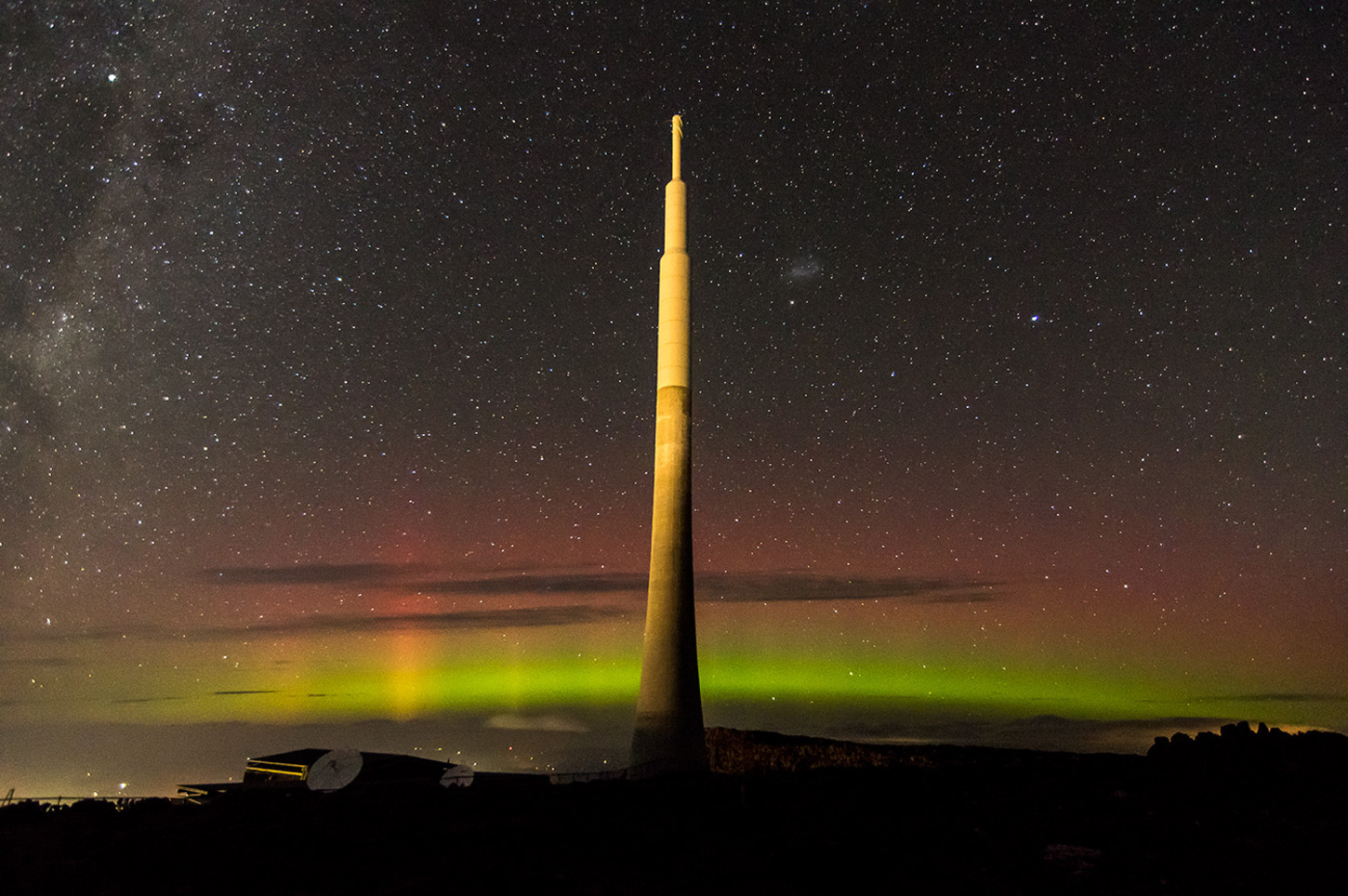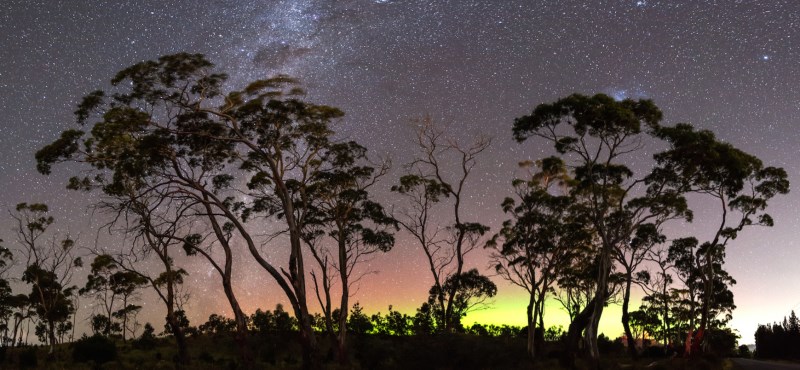
Amazing colours in the Southern Lights seen from Primrose Sands, near Hobart.
So what causes the impressive display of lights in the night sky?
As with any scientific question, the easy questions often don't have easy answers. First we need to know a little bit about the sun and its behaviour.
The sun is not a constant bright object in the sky. It's true that its brightness doesn't change much in the visible range (a fraction of a percent over its cycle) but it is much more variable in the ultraviolet (UV) and x-ray range.
In fact x-rays from the sun go from virtually none to frequent events, and back to none, over a cycle known as the solar cycle.
This cycle lasts on average a little more than 11 years but can be a year and a bit longer or shorter from one cycle to the next.
The sunspot cycle
The most obvious sign of the solar cycle is the number of sunspots that appear, hence the cycle is often called the solar sunspot cycle.
At solar minimum there are very few if any dark spots, and at solar maximum there are lots. The cycle repeats every 11-odd years, with the sun's magnetic field reversed in alternate cycles.
Sunspots are easy to observe. Put a tiny pinhole in a large dark piece of card or paper and let the sun shine through this pinhole onto a white sheet and you will see a projected image of the sun on the white sheet. You can also see the larger sunspots.
It works best if you have dark surroundings, like using a sliver of sunlight through the crack in curtains as the source.
This technique is what Chinese astrologers used around 1000AD to see the sunspots. They discovered the 11-year cycle - though they were really trying to foretell events!
Sunspots were rediscovered in the 1600s following the invention of the telescope but it is clear from the Chinese records that the cycle has been around for a long time.
Carried on the solar winds
The sunspots are only one manifestation of how the sun changes during its cycle. Another change is the number of eruptions that occur on the sun (related to the sunspots) and the strength and gustiness of the solar wind.
The solar wind is a constant stream of gas that is so hot that the electrons have been stripped away from the atoms so the gas is charged (known as a plasma).
This gas travels fast from the sun and constantly hits the earth's magnetic field and is then deflected around the earth. Typically the wind travels at about 400 kilometres per second but during eruptive events the wind speed can reach up to several thousand kilometres per second.
At solar minimum times there is enough wind for some of the plasma to compress the earth's magnetic field. This in turn speeds up electrons already in the field, which then travel along the field into polar regions, impact with atmospheric atoms and give them a little energy.
The energised atmospheric atoms then release this excess energy as light - red high up due to energised oxygen atoms, green lower down due to a slightly different energisation of oxygen atoms, and violet (which is hard to see) due to nitrogen.
All this happens a few hundred kilometres up in the atmosphere, well above the cloud layers.
An active sun
When the sun is more active and the eruptive events give rise to very fast winds, the buffeting of the earth's magnetic field is so strong and it distorts so much that the part where the lines come down to the ground, usually only near the poles, expands toward the equator. That is when the aurorae are seen further from the poles.
The sun is currently passing through its maximum state and so there are more occasions when conditions are right for seeing the aurorae from southern Australia.
You need to get clear of city lights and have a good view to the south. The best time to see them is an hour or two either side of midnight.
With especially strong "solar storms", as they are called, the aurorae can be seen earlier or later in the night and higher in the sky, not just low on the horizon.
A whole range of other phenomena associated with these storms are collectively known as "Space Weather". These have less benign impacts on us and our technology but that is a story for another time.






Comment: If you want to know more about solar cycles, plasma phenomenon and how it impacts humanity, check it out
Earth Changes and the Human Cosmic Connection: The Secret History of the World - Book 3